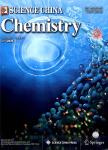Synthetic fluorescent probes to apprehend calcium signalling in lipid droplet accumulation in microalgae——an updated review
Synthetic fluorescent probes to apprehend calcium signalling in lipid droplet accumulation in microalgae——an updated review作者机构:College of Science and EngineeringFlinders UniversityAdelaideSA 5001Australia Institute for NanoScale Science and TechnologyCollege of Science and EngineeringFlinders UniversityAdelaideSA 5001Australia
出 版 物:《Science China Chemistry》 (中国科学(化学英文版))
年 卷 期:2020年第63卷第3期
页 面:308-324页
核心收录:
学科分类:081702[工学-化学工艺] 081704[工学-应用化学] 07[理学] 08[工学] 0817[工学-化学工程与技术] 070302[理学-分析化学] 0703[理学-化学]
基 金:supported by the Australia-China Science and Research Fund-Joint Research Centre on Personal Health Technologies provided by Microscopy Australia and the Australian National Fabrication Facility at the South Australia nodes under the National Collaborative Research Infrastructure Strategy are also acknowledged
主 题:aggregation-induced emission calcium lipid droplets microalgae traditional fluorophores
摘 要:Lipid bodies are dynamic organelles of photosynthetic microalgae that can be used as the third generation resources for biofuel *** of lipids can be influenced by different signalling *** of these processes can provide useful information about the fate and associated roles of lipid molecules in different biological *** photosynthetic organisms,however,studies of calcium ediated lipid biosynthesis is bottlenecked due to the limitation of proper and efficient technologies,which also include visualisation ***,most studies to visualise lipid droplets in vivo have used traditional dyes,and proper visualisation of lipid drops is hindered by dye-specific *** hurdle could be overcome by using recently developed aggregation-induced emission *** review reveals current knowledge gaps in the studies of lipid drops and calcium ions in microalgae,as calcium signaling is important secondary messenger to detect a wide variety of environmental stimuli in plant and animal *** obtain insight into the mechanisms of these processes,the merits and demerits of currently available visualisation techniques for lipid drops and calcium are also ***,opportunities and possibilities are proposed to recommend further improvement of techniques for detecting the role of calcium during lipid formation in microalgae for biofuel production.



